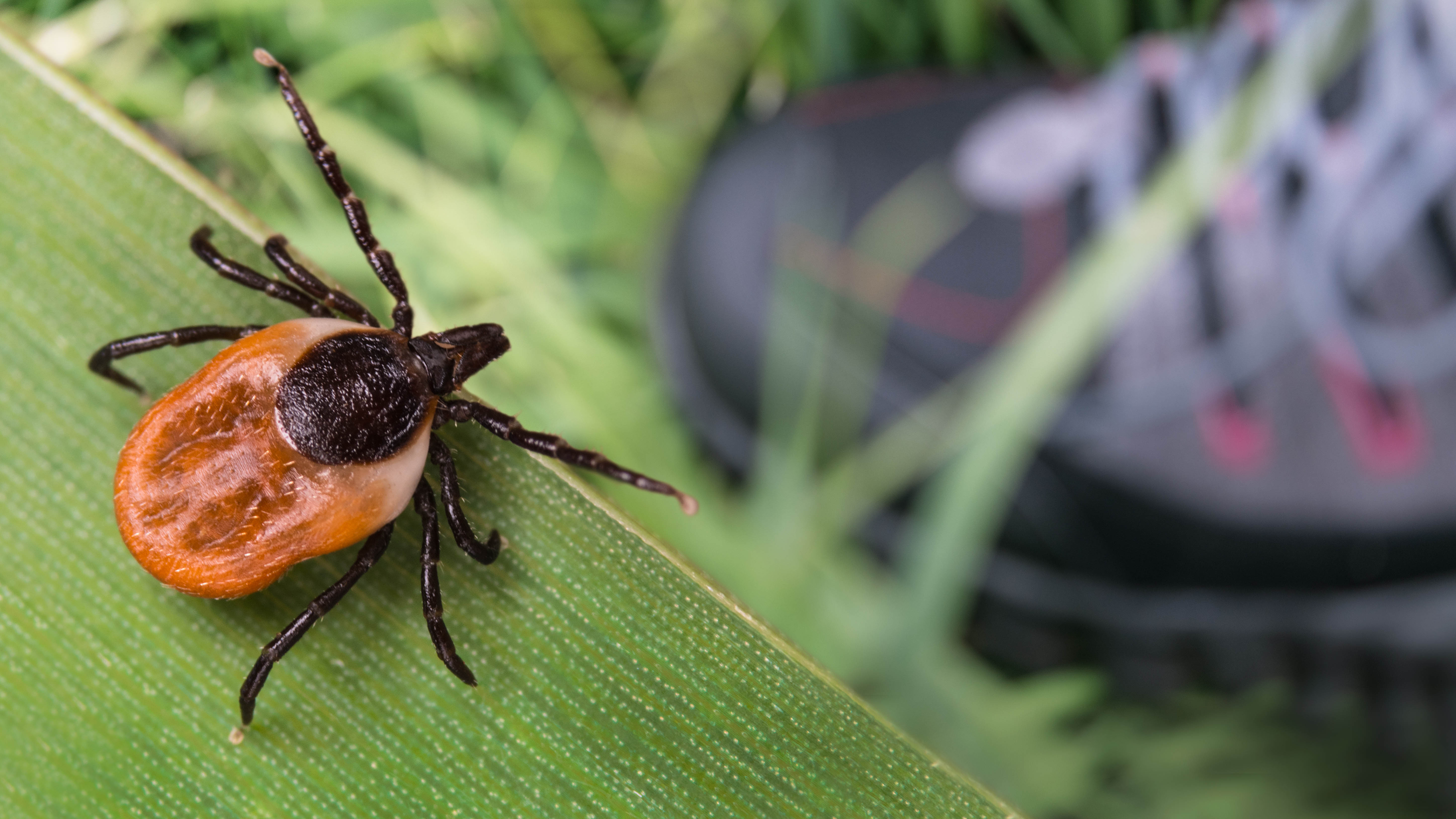
With the weather warming up, we’re bound to see all sorts of pests in our yard. But if you spot ticks, you’ll need to know how to get rid of ticks from your yard fast.
Much like the annoyance of certain mosquitoes, ticks feed off the blood of humans and pets, leaving itchy, sore bites or rashes on skin. Worse case, they can also spread diseases between hosts. In fact, ticks that carry the bacteria responsible for Lyme disease will lay eggs in batches of 3,000 or more — quickly multiplying. Plus, the transmission of tick-related diseases tends to peak from May through July. That’s why it’s so important to know how to get rid of ticks from your yard fast.
Generally, these tiny pests hide in low-ground, wooded areas, or overgrown areas with weeds and tall grasses, preferring humid and shady environments. Although the common belief is that ticks jump or fly onto their hosts, they actually wait in places such as brushes, shrubs or blades of grass, where they latch onto humans or hitch a ride on animals that brush against it.
Luckily, there are things you can do to make the environment less appealing for ticks, and prevent an infestation. So, if you want to enjoy the outdoors in peace, here are five ways to get rid of ticks in your yard.
1. Keep your grass short

If you enjoy sitting on the grass, you may be in the prime location for a nasty bite! Since ticks love to hide in long grasses, they will climb onto you from surrounding greenery.
Experts advise mowing your grass often, keeping it a low length to prevent an infestation. The general rule of thumb is to cut your grass down to 2 ½ to 3 inches for best results, removing no more than one-third of the grass length at a time.
In addition, rake up and remove dead leaves and add it to your compost. Compost or reuse any grass clippings left on the lawn, and prune overgrown bushes and trees. A well maintained lawn and landscape will prevent ticks from hiding. Plus, you don’t want to encourage other small rodents, which transport ticks.
Find out if you’re cutting your grass too short, and avoid these 7 lawnmower mistakes you’re probably making right now.
2. Create a hostile barrier

Typically, ticks are commonly found in the 3 to 4-foot perimeter surrounding your yard. Ideally, you want to create an unappealing place for ticks. After you've removed all the dried leaves, or debris in your yard, place a thick layer of gravel or wood chips to form a barrier between your lawn and your property.
Ticks don’t like to cross paths lined with wood chips or gravel, as these will literally hurt their tiny feet! In any case, this will also make a nice decorative feature to your backyard.
3. Stack up wood piles in your yard

Similarly, if you have wood piles lying around in shaded areas, these are the perfect hiding place for ticks — as well as mice and rats. Plus, rodents can also carry ticks into your property once they have come into contact with these tiny pests.
Ideally, stack the wood neatly into a manageable pile, and place it in a spot that gets sunlight, where they can dry out faster. Ticks prefer moist, wooded areas, while avoiding sunny, dry conditions. This should eliminate any potential hiding places, and keep ticks and other unwanted pests at bay.
4. Make a natural tick repellent

If you don't wish to use chemical repellents in your yard, there are plenty of natural and eco-friendly remedies that you can make. Cedar oil spray and neem oil are known to kill or repel ticks by causing suffocation, dehydration, starvation and disrupting pheromones. You can either buy both cedar oil spray and neem oil at your local gardening centers, or make a homemade solution.
Simply mix one to two teaspoons of cedarwood essential oil to one cup of water into a spray bottle. Then, spray directly in any shaded areas or perimeters of your yard where ticks are likely to hide. For neem repellent, just add two teaspoons of neem oil to four cups of water in a spray bottle before applying to your yard.
Diluted garlic oil and peppermint oil also make good natural repellents. This is mainly because ticks hate the strong smells, which puts them off from feeding and laying eggs.
Plus, these natural repellents are safe to regularly use around children and pets.
5. Use Diatomaceous Earth

This abrasive, white powder is a naturally occurring substance made from fossilized remains of tiny, aquatic organisms — diatoms. Known to be effective in killing ticks and other pests, this essentially works by destroying the waxy outer layer of their exoskeletons, causing them to dry out and instantly die.
Using a powder duster (sometimes included), sprinkle diatomaceous earth around your yard, making a line around one to two inches thick. This will kill or keep out any ticks that attempt to pass through, and will also protect your lawn and plants.
You can find this in your local gardening center or online such as this HARRIS Diatomaceous Earth ($15, Amazon), that comes with a powder duster.
When are ticks most active?
Depending on your location, common ticks are most active from April to September. This activity increases as the weather gets warmer — and when most people and animals are enjoying the outdoors.







